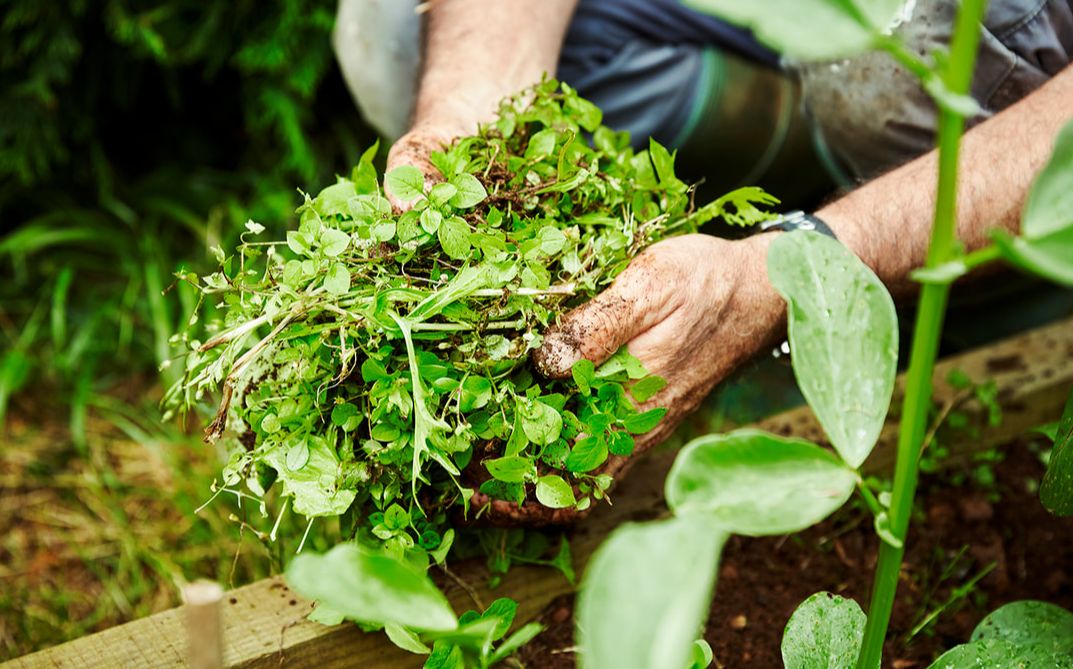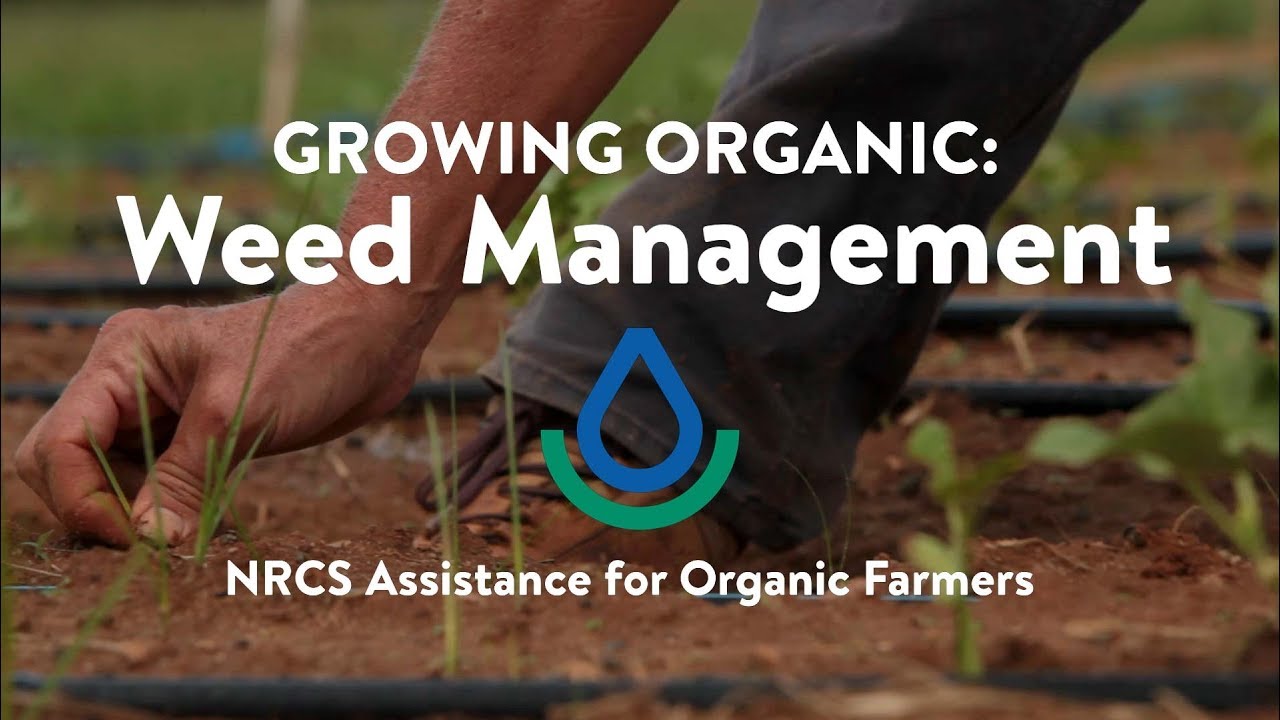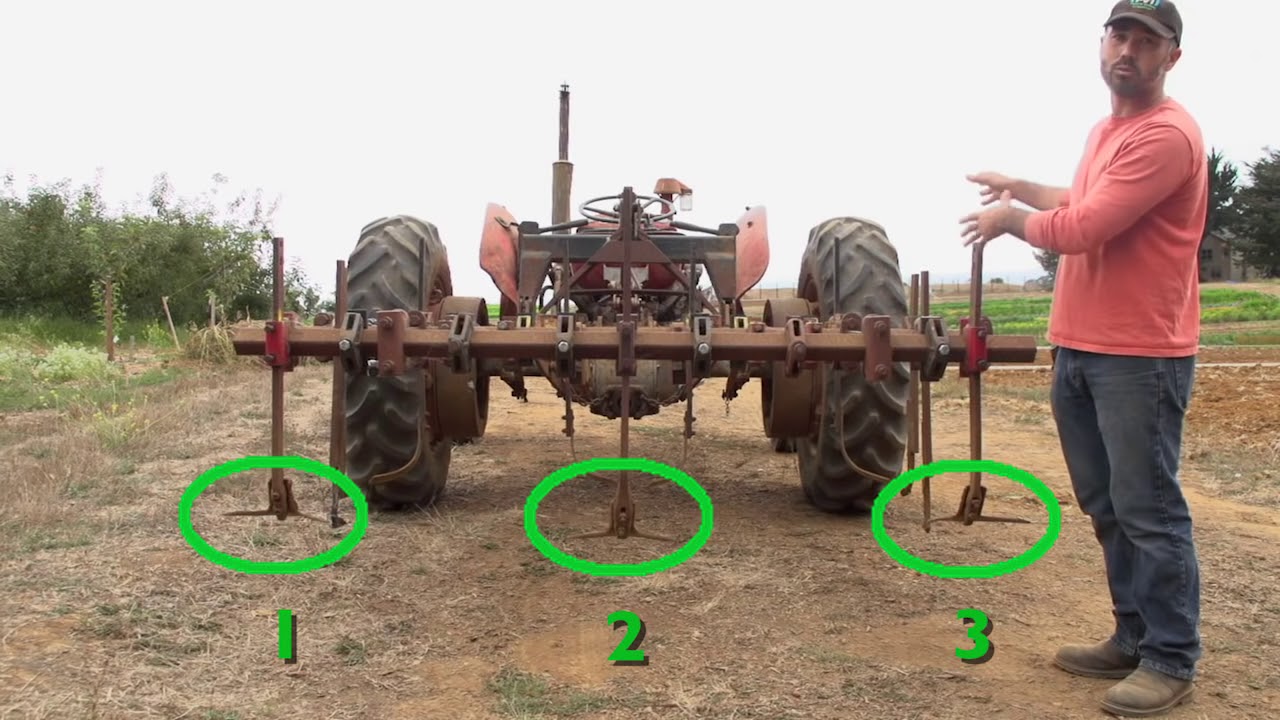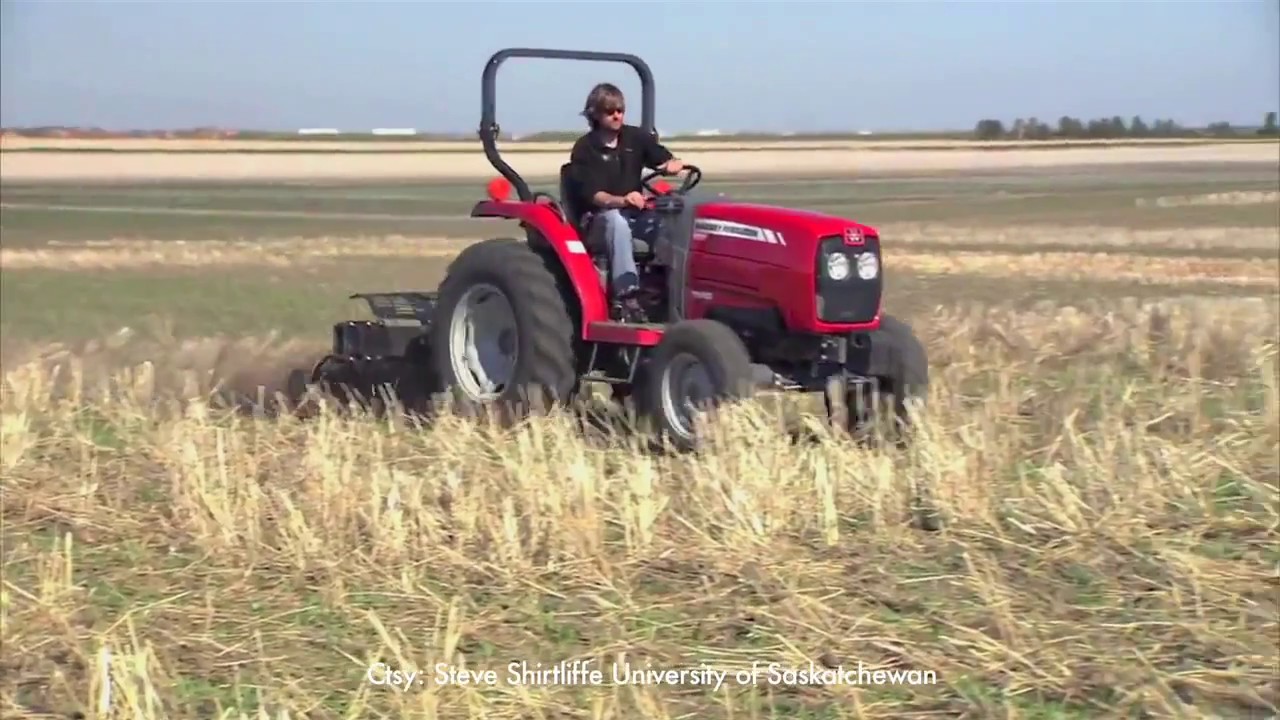Weed Management - Major Challenges In Agriculture
Weeds are one of the most significant biotic restrictions to agricultural productivity in both developing and developed countries, making weed management a critical concern. Weeds, together with pathogens (fungi, bacteria, etc.) and animal pests (insects, rodents, nematodes, mites, birds, etc.), pose the greatest potential yield loss to crops.
Author:Suleman ShahReviewer:Han JuJul 15, 20229 Shares495 Views

Weeds are one of the most significant biotic restrictions to agricultural productivity in both developing and developed countries, making weed managementa critical concern.
Weeds, together with pathogens (fungi, bacteria, etc.) and animal pests (insects, rodents, nematodes, mites, birds, etc.), pose the greatest potential yield loss to crops.
Weeds fight for sunlight, water, nutrients, and space with crops. Furthermore, they serve as a breeding ground for insects and viruses that harm crop plants.
They also degrade native habitats, endangering native plants and animals.
Weeds are physically eradicated in impoverished nations where farm sizes are minimal. This approach is becoming less widespread as a result of workforce migration to cities and rising agricultural wage prices.
Over-reliance on herbicides with comparable modes of action, on the other hand, has led in the emergence of herbicide-resistant weeds.
Weed Biology And Ecology
It is necessary to have a solid understanding of the biology and ecology of weeds in order to design any kind of weed management program. Recently, there has been an upsurge in the amount of investigations into the biology of weeds.
This is likely due to the fact that we still lack fundamental information on a number of significant species. It would be easier to develop effective management practices if one had a better understanding of the environmental factors that influence the germination of weed seeds.
These practices could involve increasing the rate of germination in order to eliminate seedlings or decreasing the rate of germination for the opposite purpose.
On the basis of such an understanding, management programs might potentially include tactics to deplete weed seed banks by exerting an influence over the germination of weed seeds.
In a similar vein, having knowledge on the phenology of weeds would make it possible to develop more targeted techniques of weed control by allowing for a more precise estimation of the timing and consequences of weed competition on crop productivity.
In a recent study on the phenology of Amaranthus palmeri S. Watson, the researchers came to the conclusion that while the biological characteristics of species that are native to different parts of the United States can vary, it was the environmental plasticity of the plant that contributed to the spread of populations.
The vast majority of studies on the biology and ecology of weeds have only used a small number of populations. Despite this, it is possible for populations from one region to differ from those from other regions due to differences in management practices, rainfall, temperature, soil type, and other factors.
Because of this, future research has to cover a number of different populations in order to successfully draw conclusions from the data that is now accessible.

Weed Management
Crop Competition
One definition of a sustainable weed control approach is "any strategy in which a crop is employed to manage weeds." In order to accomplish efficient weed management, tactics such as these need to be combined with other types of instruments. Increasing the crop's competitiveness or decreasing the weeds' competitiveness are both acceptable approaches for implementing this strategy, which has the dual purpose of mitigating the negative impact of weeds on the crop.
You can boost the competitiveness of your crops by decreasing the row spacing between them, increasing the crop seeding rate, changing the direction in which you plant your crops, using a crop cultivar that is resistant to weeds, and increasing the precision with which you apply nutrients so that they are available to your crops rather than the weeds.
Growing a crop that is competitive with weeds can dramatically cut down on the amount of weed biomass and weed seed generation that occurs within a crop. Growers always favor reduced seed numbers since such tactics gradually deplete weed seeds over time if integrated with other instruments for managing weeds. This makes reduced seed numbers the preferred method of weed management.
Even though crop competition is not a novel method, there is the possibility that it may be used more effectively, particularly for weeds that are resistant to herbicides. A single or double application of herbicide would be sufficient to control weeds in the early stage of the crop before the traits of a competitive crop would diminish the requirement for further weed management 3 to 4 weeks after planting.
The crop canopy needs to be covered as quickly as feasible in order to get the desired effect. Weeds that emerge after the canopy has closed have a reduced capacity for both growth and the production of biomass and seeds.
There is a need for additional research in the area of crop competition components being coupled with the usage of herbicides and other methods for weed management.
Thermal Weed Management
Plant tissues are easily damaged by high temperatures, which can have a negative impact on the plant's physiological processes. Heat can be utilized to manage weeds in a variety of ways, including direct flame, solarization, microwaves, laser radiations, steam, and electrocution.
Direct flaming is the most common method. Herbicide-resistant weeds can be eradicated using these methods of weed control, which can be applied on fallows. If these methods are going to be applied in field crops, then there needs to be additional research done.

Introduction to Weed Management in a Small Scale Organic Production System HD
Climate Change
The most significant effects of climate changeare an increase in the concentration of carbon dioxide (CO2) and temperature, as well as an increase in the intensity and frequency of droughts and floods.
The majority of the study that has been done on the effects of climate change on weeds has been on CO2 and has been carried out almost entirely in the United States. It is necessary to include other parameters (such as temperature and the availability of water) and geographical regions in this research, with the primary focus being placed on the processes that are accountable for differential reaction to diverse climatic conditions.
The anticipated weather conditions are also likely to have an impact on the effectiveness of herbicides. For instance, it was shown that a rise in CO2 causes a C3 weedy species called Chenopodium album L to become more tolerant to the herbicide glyphosate.
Such alterations in herbicide resistance give the impression that the effectiveness of chemical weed control may suffer in the not too distant future.
Modeling And Robotics
In the future, site-specific and cost-effective weed management will be easier to achieve thanks to the application of modeling and robotics in a manner that is both highly scientific and extremely practical.
Because of this, the creation of effective guidance systems is an essential area of research for decision-support systems and site-specific weed control. This type of research may take some time, particularly in developing nations.
Herbicide Use
Herbicides are essential components of any comprehensive weed management strategy. The current reliance on herbicides calls for a more nuanced strategy, in particular through the utilization of effective application methods, in order to lengthen the useful lifespan of many different modes of action.
It is possible to lessen the likelihood of weeds developing resistance to herbicides by use full herbicide rates, herbicide combinations, and herbicide rotations.
In order to be successful, these tactics call for extra focus in developing nations. In addition, there is a need for research to be carried out on the production and utilization of nano herbicides in a variety of cropping systems.
Integrated Weed Management (IWM)
Instead of depending on a single strategy for weed control, integrated weed management (IWM) involves the use of multiple, complementary methods within a system.
The primary objective of integrated weed management (IWM) is to lessen the selection pressure that could lead to weeds becoming resistant to a particular type of weed control.
Regrettably, weed research in the majority of countries focuses on pesticide research. More research on IWM in all types of global settings is required if effective weed management is to be achieved, as is a reduction in the likelihood of the evolution of weeds that are resistant to herbicides.

Strategies for Successful and Sustainable Weed Management
People Also Ask
What Is The Importance Of Weed Management?
Weeds are detrimental to agricultural production because they reduce yields, raise production costs, impede harvesting, and diminish product quality. Weed management is therefore essential. Additionally, weeds obstruct the flow of irrigation water, disrupt the administration of pesticides, and provide a breeding ground for disease organisms.
What Is Weed Management In Organic Farming?
In the context of weed removal and prevention, the term "organic weed management" refers to a method that does not include the application of man-made chemicals and weed killers. Cultural and mechanical methods, which center their attention on prevention, crop rotation, and cultivation, are examples of certain organic weed control options.
What Are Mechanical Methods Of Weed Management?
The goal of the mechanical weed management methods is to reduce the weed propagule, with the end goal of reducing the weed population as well as the weed's capacity to compete with other plants. This goal is accomplished through the application of a variety of mechanical techniques, including fallow-season tillage, preplant tillage, and limited postplant tillage.
What Is The Difference Between Weed Control And Weed Management?
The technique of reducing the number of unwanted plants in an area so that more valuable crops can be produced there is referred to as weed control. Invasions can be reduced, growth can be stifled, seed production can be stopped, and weeds can be completely eradicated using weed management practices such as prevention, eradication, and controlled use of approved chemicals.
Conclusions
The presence of weeds represents a significant biotic barrier to production across a variety of agricultural systems. A single approach of weed control will not provide effective long-term weed management since it will frequently result in the development of resistance to the weeds.
Even after employing a specific method of weed control, a considerable loss in yield can still be attributed to the presence of weeds.
It is becoming increasingly important to cut down on yield loss in order to meet the demands of feeding a constantly growing human population. As a result, there is a pressing need to design IWM initiatives that are both successful and sustainable.

Suleman Shah
Author
Suleman Shah is a researcher and freelance writer. As a researcher, he has worked with MNS University of Agriculture, Multan (Pakistan) and Texas A & M University (USA). He regularly writes science articles and blogs for science news website immersse.com and open access publishers OA Publishing London and Scientific Times. He loves to keep himself updated on scientific developments and convert these developments into everyday language to update the readers about the developments in the scientific era. His primary research focus is Plant sciences, and he contributed to this field by publishing his research in scientific journals and presenting his work at many Conferences.
Shah graduated from the University of Agriculture Faisalabad (Pakistan) and started his professional carrier with Jaffer Agro Services and later with the Agriculture Department of the Government of Pakistan. His research interest compelled and attracted him to proceed with his carrier in Plant sciences research. So, he started his Ph.D. in Soil Science at MNS University of Agriculture Multan (Pakistan). Later, he started working as a visiting scholar with Texas A&M University (USA).
Shah’s experience with big Open Excess publishers like Springers, Frontiers, MDPI, etc., testified to his belief in Open Access as a barrier-removing mechanism between researchers and the readers of their research. Shah believes that Open Access is revolutionizing the publication process and benefitting research in all fields.

Han Ju
Reviewer
Hello! I'm Han Ju, the heart behind World Wide Journals. My life is a unique tapestry woven from the threads of news, spirituality, and science, enriched by melodies from my guitar. Raised amidst tales of the ancient and the arcane, I developed a keen eye for the stories that truly matter. Through my work, I seek to bridge the seen with the unseen, marrying the rigor of science with the depth of spirituality.
Each article at World Wide Journals is a piece of this ongoing quest, blending analysis with personal reflection. Whether exploring quantum frontiers or strumming chords under the stars, my aim is to inspire and provoke thought, inviting you into a world where every discovery is a note in the grand symphony of existence.
Welcome aboard this journey of insight and exploration, where curiosity leads and music guides.
Latest Articles
Popular Articles